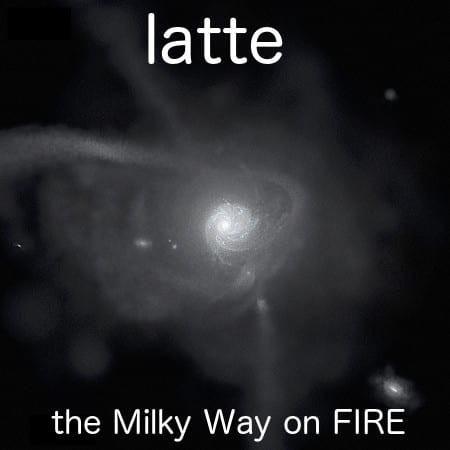Milky Way (& Local Group)
The FIRE project is pushing the resolution frontier by simulating Milky Way-like galaxies at ultra-high resolution, reducing the reliance of galaxy simulations on sub-resolution approximations for feedback processes. The Latte suite of simulations (Wetzel et al. 2016) use mass resolutions of 7070 solar masses per particle and spatial resolution down to 1 pc to address key problems in galactic archaeology and near-field cosmology. This ultra-high resolution makes it possible to treat star particles self-consistently as single-age, single-metallicity stellar populations, opening a new frontier in comparisons with observations through the ananke synthetic survey pipeline (Sanderson et al. 2018).
Recently we have also extended these studies to include simulations of the entire Local Group volume — several Mpc in size, including both a Milky Way and Andromeda analogue, and all the volume around, simulated self-consistently in a configuration resembling our own Local Group. And with ~1pc spatial resolution and even higher, ~4000 solar mass resolution. These simulations make it possible to explore the Local Group and Local Field in preparation for next-generation surveys with JWST and other telescopes. Some initial studies of the surrounding dwarf galaxy population are presented in Garrison-Kimmel et al. 2018.
Full (raw) snapshot files at z = 0 for three Latte simulations (m12f, m12i, m12m), including all dark matter, gas, and star particles, as well as corresponding synthetic Gaia DR2-like surveys for each simulation, are available at ananke.hub.yt.
Click on the images below for more information.

